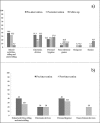Games as education tools
- PMID: 31879542
- PMCID: PMC6922549
- DOI: 10.5935/1984-0063.20190069
Games as education tools
Abstract
Objective: The aim of this study was evaluated effects of an intervention with the serious game "Perfect Bedroom: learn to sleep well" on the sleep habits of healthy children.
Methods: Two groups were composed, experimental (EG) (n=8) and control (CG) (n=5), with health children. This study presented four stages: pre-intervention, intervention, post-intervention and follow-up. Parents responded questionnaires about sociodemographic data and sleep habits measured by UNESP Sleep Habits and Hygiene Scale Child version (USHS). Children responded strategies developed by researchers: "Set up your bedroom" and "Mapping activities before bedtime". The intervention was performed with "Perfect Bedroom" twice a week and for three weeks in a row. Inferential analysis was accomplished for comparisons between groups (Mann-Whitney test) and intragroups (Wilcoxon signed-rank test and Friedman test for repeated measures).
Results: Preliminary results indicated non-significant differences on the sleep habits reported by parents. Children's responses indicated a reduction in the number of electronic objects in bedroom and actions with these devices to EG.
Discussion: As far as we know, this is the first study that used a serious game to promote healthy sleep habits in children. In addition, they are actively included in the change process. Preliminary findings contribute to indicate the potential of this approach as an effective tool to promote healthy sleep habits in children.
Keywords: Children; Games, Experimental; Interactive Learning; Sleep; Sleep Hygiene.
Figures
References
-
- Matricciani L, Olds T, Petkov J. In search of lost sleep: secular trends in the sleep time of school-aged children and adolescents. Sleep Med Rev. 2012;16(1):203–211. - PubMed
-
- National Sleep Foundation . Sleep in America poll. Washington: National Sleep Foundation; 2004. http://sleepfoundation.org/sites/default/?les/FINALSOF2004.pdf [Internet]
-
- Simola P, Liukkonen K, Pitkäranta A, Pirinen T, Aronen ET. Psychosocial and somatic outcomes of sleep problems in children: a 4-year follow-up study. Child Care Health Dev. 2012;40(1):60–67. - PubMed
-
- Mindell JA, Meltzer LJ, Carskadon MA, Chervin RD. Developmental aspects of sleep hygiene: findings from the 2004 National Sleep Foundation Sleep in America Poll. Sleep Med. 2009;10(7):771–779. - PubMed
LinkOut - more resources
Full Text Sources
Medical
Research Materials

